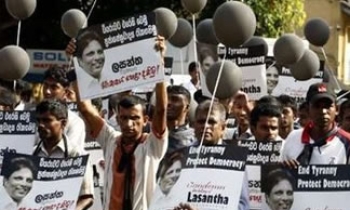NEW DELHI: The Supreme Court on Thursday issued notice to the Centre, the Press Council of India, Times of India, Hindustan Times, the Press Trust of India and the United News of India on a petition questioning the publication of "titillating material" (in the two newspapers) in the name of right to freedom of speech and expression enjoyed by the Press.
A three-Judge Bench comprising the Chief Justice, R.C. Lahoti, Justice G.P. Mathur and Justice P.K. Balasubramanyan issued notice after the petitioner drew the Court's attention to publication in the Press, in particular the two newspapers, of allegedly obscene photographs, articles on pornography, SMS jokes and sex education, categorised to be viewed only by adults.
The petitioner, Ajay Goswami, said the petition involved substantial questions of law of private and public importance on the fundamental right of citizens regarding freedom of speech and expression as enshrined in Article 19 (1) (a) of the Constitution. He said he was aggrieved that the freedom of speech and expression enjoyed by the newspaper industry was not balanced against protection of children from harmful and disturbing material. He said that with the advent of commercialism and a zeal to promote circulation, numerous attempts were being made to cater to prurient interest of the public at large. The newspapers were publishing titillating material, whether the article was a piece of art, information, or worthier reading. ``At times the photographs accompanying them are certainly distasteful. The jokes published are vulgar, cheap and are only meant to titillate the grey cells in the brain. All this is certainly not in the interest of physical and psychological well-being of minors," the petitioner contended.
He said it was the duty of the Government to protect minors from exposure to unwanted material circulated through the media, as India was a signatory to the United Nations Convention on the Rights of the Child, 1989, and the Universal Declaration of Human Rights.
The petitioner contended that notwithstanding the regulations framed by the Press Council of India, the Press was continuing to publish material that catered to the prurient interest of the public at large.









